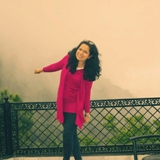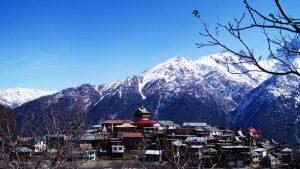Last Updated: July 25, 2019 Latika Sabharwal
We Indians, take our festival celebrations way too seriously!
Be it the regional festival like Nag Panchami or the main ones like Dussehra and Holi, each is celebrated with great pomp and show. Amongst all these festivals, the most significant one is Diwali. Despite being a multifaith country, Diwali is celebrated everywhere, and almost by everyone in India. It is a beautiful time of the year when everything simply looks like a kaleidoscope. In almost every household, rangolis are made then there is a tradition of lighting oil lamps and launching fireworks. But do you know what is the symbolism behind the oil lamps, the fireworks, and the beautiful Rangoli?
Surely, most of you will not be able to answer this question but after reading this blog, you certainly will be. Here’s an ultimate guide that will tell you everything you need to know about the religious festival.
What is Diwali?

Diwali is one of the most significant festival in India that is celebrated by the people of every religion. The festival highlights the good over evil, knowledge over ignorance, and hope over despair. Also known as the ‘festival of lights,’ Diwali celebration spans for five days and in some regions even more than that. On this day, houses and shops are decorated with colorful lights and candles for the celebration, which marks the start of a new business year.
Diwali Daze – Unforgettable rituals of Diwali
Now, when you know what is Diwali all about. Let’s have a look at the rituals and significance behind them:
Dhanteras (Day 1)

In the North and Western Region of India, Diwali kick starts from Dhanteras. On this day, people decorate their houses with rangoli. Legends says that Dhanteras marks the birth of Dhanvantari – God of Health and Healing, and Lakshmi – the Goddess of Wealth and Prosperity. And that’s the reason why people light up the entire house with lights and days. Also, it is a major shopping day; people buy utensils, electronic good, and household items. Purchasing utensils on Dhanteras is auspicious.
Naraka Chaturdasi (Day 2)

Also known as Choti Diwali, Naraka Chaturdasi was the day when Narakasura was killed by Krishna. In states like Tamil Nadu, Goa, and Karnataka, Naraka Chaturdashi is celebrated as Diwali. Special bathing rituals such as a fragrant oil bath are held in some regions, followed by minor pujas.
Lakshmi Puja (Day 3)

People start their day by decorating their houses, making rangoli and preparing for the puja. Legend has it that Goddess Lakshmi roam around the earth on Diwali night. And that’s perhaps the reason why people open their doors and windows to welcome Lakshmi, and place an oil lamp lights on their windowsills and balcony ledges to invite her in the house. Once the puja is done, kids start blowing crackers. The fireworks signify the celebration of Diwali as well a way to chase away evil spirits.
Padwa, Balipratipada (Day 4)

Next day to Diwali is Padwa. A special Govardhan puja, and New year celebration in Gujarat takes place on this day. Also, merchants and shopkeepers, start a new fiscal year after taking blessings from Lakshmi and other deities.
Bhai Duj, Bhaiya Dooji (Day 5)

Last day of the festival is Bhai dooj. On this day, sisters tie a sacred knot on their brother’s wrist and pray for their well-being.
Why why why do we celebrate Diwali?
 There are many stories associated with each day of Diwali. Here, we will tell you about these stories and legends of Diwali.
There are many stories associated with each day of Diwali. Here, we will tell you about these stories and legends of Diwali.
From the Ramayana…
 As per the ancient Indian epic, Ramayana, Lord Rama was sent by his father to exile for 14 years. His wife, Goddess Sita, and brother, Lakshmana accompanied him on this refuge. During the 14 years journey, Sita was kidnapped by Ravana, a demon king, which eventually resulted in war. Lord Ram won the war by killing Ravana reflecting the triumph of good over evil and came back to his Kingdom Ayodhya after 14 years of exile. People of Ayodhya welcomed them by lighting rows of clay lamps. And that’s how Diwali came into existence.
As per the ancient Indian epic, Ramayana, Lord Rama was sent by his father to exile for 14 years. His wife, Goddess Sita, and brother, Lakshmana accompanied him on this refuge. During the 14 years journey, Sita was kidnapped by Ravana, a demon king, which eventually resulted in war. Lord Ram won the war by killing Ravana reflecting the triumph of good over evil and came back to his Kingdom Ayodhya after 14 years of exile. People of Ayodhya welcomed them by lighting rows of clay lamps. And that’s how Diwali came into existence.
Saga of King Bali and Vamana Avatar…
 Another story associated with the history of Diwali is of king Bali and Vamana Avatar, a dwarf who was the incarnation of Vishnu. Once there was a wealthy king called Bali, who was a generous man but at the same time thoroughly ambitious. Amused by his hunger for power, all the deities flocked to Vishnu to request him to check King Bali’s power. After all the request, Vishnu came to earth in the form of a Vamana(dwarf) dressed as a priest. He went to the King Bali’s court and said
Another story associated with the history of Diwali is of king Bali and Vamana Avatar, a dwarf who was the incarnation of Vishnu. Once there was a wealthy king called Bali, who was a generous man but at the same time thoroughly ambitious. Amused by his hunger for power, all the deities flocked to Vishnu to request him to check King Bali’s power. After all the request, Vishnu came to earth in the form of a Vamana(dwarf) dressed as a priest. He went to the King Bali’s court and said
“You are the ruler of the three worlds: the Earth, the world above the skies and the underworld. Would you give me the space that I could cover with three strides?”
After hearing his request, Bali had a laugh of his life. He immediately accepted his request as he was sure that the dwarf would hardly cover any area. At this point, the dwarf changed into Vishnu and his three strides covered the Earth, the Skies and the whole Universe! After failing to accept his request to provide 3 steps land, Vamana sends Mahabali to live in netherworld for some period. On the special occasion of Diwali, Vamana is remembered by his devotees.
Defeat of Narakasura by Lord Krishna
 Once there was a filthy demon called Narakasura, who used to kidnap girls and force them to live with him. People were terrified by his act and decided to plead Lord Vishnu for help. Lord Vishnu came to their rescue in the form of Lord Krishna. He beheaded him (Narakasura) with his Sudarshana Chakra. Before dying, Narakasura requested a boon from his mother, Satyabhama, that everyone should celebrate his death with colorful light. Thus this day is celebrated as ‘Naraka Chaturdashi’ – the day before Diwali. In South India, Diwali is celebrated a week before i.e. on the auspicious occasion of Naraka Chaturdashi.
Once there was a filthy demon called Narakasura, who used to kidnap girls and force them to live with him. People were terrified by his act and decided to plead Lord Vishnu for help. Lord Vishnu came to their rescue in the form of Lord Krishna. He beheaded him (Narakasura) with his Sudarshana Chakra. Before dying, Narakasura requested a boon from his mother, Satyabhama, that everyone should celebrate his death with colorful light. Thus this day is celebrated as ‘Naraka Chaturdashi’ – the day before Diwali. In South India, Diwali is celebrated a week before i.e. on the auspicious occasion of Naraka Chaturdashi.
Krishna Lifting Govardhana Giri (mountain) to teach Indra a lesson
 Once upon a time, people of Gokul used to pray Lord Indra to celebrate the Autumn season. Krishna didn’t approve this practice and requested the villagers to give appreciation to Mount Govardhan by preparing a ‘giriyajna’ – a “great offering of foods and delicacies to the mountain.” Upon seeing villagers praying the mountain, Indira fumed and forced and a lightning storm, which leads to continuous downpour in the village for days. That’s when Krishna lifted the Mount Govardhan on his pinky finger, and the entire village came into its shelter. Indra, after causing torrential rains for seven days, ultimately gave up and bowed to Krishna’s superiority. And that’s how the Govardhan Puja came into existence.
Once upon a time, people of Gokul used to pray Lord Indra to celebrate the Autumn season. Krishna didn’t approve this practice and requested the villagers to give appreciation to Mount Govardhan by preparing a ‘giriyajna’ – a “great offering of foods and delicacies to the mountain.” Upon seeing villagers praying the mountain, Indira fumed and forced and a lightning storm, which leads to continuous downpour in the village for days. That’s when Krishna lifted the Mount Govardhan on his pinky finger, and the entire village came into its shelter. Indra, after causing torrential rains for seven days, ultimately gave up and bowed to Krishna’s superiority. And that’s how the Govardhan Puja came into existence.
Return of Pandavas
 As per Mahabharata, a Sanskrit epic of ancient India, on Kartik Amavashya, Pandavas appeared from their 12 years of banishment, a punishment which they got after a defeat at the game of dice.
As per Mahabharata, a Sanskrit epic of ancient India, on Kartik Amavashya, Pandavas appeared from their 12 years of banishment, a punishment which they got after a defeat at the game of dice.
Goddess Kali
 On Diwali, people in East India, mainly Bengal and Assam, worship Kali. There a long story associated with the worship of Kali on the day of Diwali, which says that the goddess lost control and started the dance of destruction after killing so many demons. She started to killing everyone who came here way. That’s when Shiva intervened. He went and lay down among the corpse where the goddess was dancing. Accidentally, Kali stepped on Shiva. Seeing her consort under her foot, Kali realized that she had gone too far, and calmed down. That’s when she took out her tongue out of embarrassment.
On Diwali, people in East India, mainly Bengal and Assam, worship Kali. There a long story associated with the worship of Kali on the day of Diwali, which says that the goddess lost control and started the dance of destruction after killing so many demons. She started to killing everyone who came here way. That’s when Shiva intervened. He went and lay down among the corpse where the goddess was dancing. Accidentally, Kali stepped on Shiva. Seeing her consort under her foot, Kali realized that she had gone too far, and calmed down. That’s when she took out her tongue out of embarrassment.
Ever since people remember this momentous episode on the Diwali. And people pray Kali so as to seek help in destroying evil. It is even said that praying Kali on the midnight on the amavasya is auspicious.
Multi-cultural history of Diwali celebration
 Diwali is religiously significant not only to the Hindus but also to Sikhs, Jains, and Buddhist people.
Diwali is religiously significant not only to the Hindus but also to Sikhs, Jains, and Buddhist people.
For Sikhs, Diwali is marked as Bandi Chhor Divas as this is when Guru Har Gobind freed himself and some Hindu Rajas from the prison of Jahangir, the Mughal emperor. Ever since then, Sikhs celebrate Diwali and the Golden Temple in Amritsar remain light up with colors.
In Jainism too, Diwali is considered as significant as this is when Lord Mahavira, the last of the Tirthankar of this era, attained Nirvana on 15 October 527 BCE. Even the Gautam Gandhar Swami, the chief disciple of Lord Mahavira achieved omniscience (Kevala Gyan) later the same day. On the day of Diwali, people visit the Jain temple to offer Nirvan Ladoo to Lord Mahavira.
Diwali is also marked as an important event in the Arya Samaj festival calendar as this is when Swami Dayananda Saraswati, one of the greatest reformers of Hinduism and founder of Arya Samaj, attained his nirvana.
How Diwali is Observed all Over India?
Though Diwali is celebrated everywhere in India but every region has their own way of observing it. Let’s see how the festival of lights is observed in the different corners of India.
East India

Photo: Diwali Celebration in West Bengal
East India, which mainly includes West Bengal, Bihar, Orissa, and Assam, has a unique way of celebrating Diwali. As we move from one state to another the culture of celebration of this festival changes. So let’s have a look at how the people of East India celebrate Diwali.
West Bengal (dipaboli or dipali)
In West Bengal, Goddess Kali (one of the ten Mahavidyas) is worshiped instead of Lakshmi. People light up diyas and candles in memory of the souls of departed ancestors. All over the state, pandals of Goddess Kali is erected for two days of celebration. The actual worship of the deity is, however, done only for one night during this festival.
Bihar
Diwali celebration in Bihar spans for four days. In the tribal community, eating raw coconut and a beetle is auspicious. In Chota Nagpur of Bihar, men circumambulate their village with a basket full of paddy and grass.
Orissa (dipabali)
In Orissa too Diwali is observed for four sacred days. A special rangoli of a sailboat with seven chambers is made in every house. In each chamber items like cotton, mustard, salt, asparagus root, turmeric, and a wild creeper. During the main puja, all the members of the family hold a bundle of jute stems in their hands. A primitive custom in this festival includes burning of jute stems to light up the dark path that the spirits of the ancestors supposedly take to go back to heaven.
South India

Photo: Diwali Celebration in Bangalore
In South India, including Kerala, West Bengal, Andhra Pradesh, Telangana and Tamil Nadu, celebration spans for four days instead of the usual five days. When in North India, Choti Diwali is commemorated that’s when actual Diwali in South India begins. On the second day, Lakshmi Puja is done. Bali Padyam / Bali Pratipada is celebrated on the fourth day of Diwali. While the fifth day is Yama Dvitiya.
Tamil Nadu (tīpāvaḷi)
On the special occasion of Diwali, people of Tamil Nadu decorate their house and draw a kolam patterns with kavi (red oxide). They take an early morning oil bath. Before the bath, elders in the house apply gingelly oil on the heads of the younger members. Special lunch and breakfast are prepared on the main day of Diwali.
Andhra Pradesh, and Telangana
No other states in south India celebrate Diwali the way Andhra Pradesh does. In Andhra Pradesh and Telangana, the festivities center over two days – Naraka Chaturdasi and Deepavali Amavasya. Festivities begins early in the morning. People indulge most of the time in shopping and decorating their houses.
Kerala
Probably, Kerala is the only place in India where Diwali is a low-key affair. As such there’s no grand celebration but the locals are often seen visiting the temple, and fair.
Karnataka
In Karnataka also, the festival starts with a religious ceremony called – neeru tumbo habba – as per which the houses are cleaned, washed and painted. Next day, Lakshmi puja is done. On the fourth day, the house, especially the entrance, is decorated with flowers and floor decorations to invite Bali into their homes. A special entrance to the home is built, made out of cow-dung (gomaya) and Sandalwood (siri-chandana). The third day marks the Govardhana Puja when Keraka (replica of the Govardhana giri using cow dung) bejeweled with flowers and maize, ragi stalks is prepared.
West India

Photo: Diwali Celebration in Goa
After reading this section, even you will agree with me to the fact that the people of West India take their festival celebrations way too much seriously. In some regions of West India, the celebration begins on the 11th day of Krishna Paksha of Ashvin (month of Aaso according to Gujarati calendar). The 12th day is dedicated to the cow and his calf. Dhanteras is celebrated on the 13th day, the way it happens in the rest of the India. On the main day, people decorate houses with lamps and rangoli. Small footprints are made out of vermillion powder and rice flour in all parts of the house to indicate the arrival of Goddess Lakshmi. Next day is ‘Kali Chaudas’ in Gujarat and ‘Naraka Chaturdashi’ in other regions. The last day of Diwali is Bhai Dooj.
Gujarat
Celebration commences in Gujarat a little earlier as compared to the rest of India i.e. on the 11th day of Krishna Paksha of Aaso. Diwali celebration is a little special in Gujarat as on the fourth day of the festival, which is usually Govardhan Puja, people celebrate their New Year. For the merchants and the businessmen of Gujarat, Diwali is a special day as this is when they inaugurate account books, also known as Chopda.
Maharashtra
For Diwali, people of Maharashtra prepare special sweets and snacks. The festival commences from Vasubaras, the 12th day of the 2nd half of the Marathi month Ashvin. On this day aarti of the cow and its calf, who are the symbol of love between mother and her baby, is done. On the special occasion of Naraka Chaturdashi, the third day of Diwali, people get up early in the morning and take bath before sunrise; preceded by an Aarti. Next day, Bali Pratipada is commemorated as per which wife puts tilak on her husband’s forehead and in return gets an expensive gift. It marks the start of Hindu financial year. Early morning, a cultural event called Diwali Padwa is organized.
Goa
Naraka Chaturdasi marks the commencement of Diwali festival in Goa. Like rest of the India, here too people decorate their houses with kandeel, lamps, mango leaves, and marigold flowers. On the eve of Naraka Chaturdashi, paper-made effigies of Narakasura, filled with grass and firecrackers symbolizing evil, are made. These effigies are burnt at around four o’clock in the morning. Women perform aarti of the men. And a bitter berry called karat is crushed under the feet in token of killing Narakasura, symbolizing evil and removal of ignorance. Different varieties of Poha and sweets are prepared. Festivities continue till Tulsi Vivah and lamps are lit every evening. Celebrations include Lakshmi puja on the Diwali day, Krishna puja or Govardhan puja and cattle worship on Balipratipada day, Bhaubeej, and Tulsi vivah.
Madhya Pradesh
In Madhya Pradesh, the celebration begins of Dhanteras till Bhai Dooj/Bhatri Ditya. Houses are decorated, and offerings like Balushahi, khasta or crumbly doughnuts are prepared. People of Baiga and Gond tribes mark this festival by performing a traditional dance. Besides Diwali, in some areas of Madhya Pradesh Kojagara is observed on the night of fullmoon. The ritual of Kojagara festival is to fast all the day. And after worshipping Goddess Lakshmi and Lord Indra at night, people break their fasts by offering coconut water and flattened rice to the gods.
North India

Photo: Diwali Celebration in Delhi
One can say that Diwali is the favorite festival for the people of North India. Dhanteras is the first day as per which purchasing gold, silver or copper utensils is considered as auspicious. Following day, Chhoti Diwali is celebrated. On the day of main Diwali, people start decorating their houses early in the morning, and the evenings are marked by pujas dedicated to Goddess Lakshmi, with Lord Ganesha alongside. Firecrackers are set off to drive away evil; oil lamps are lit; flower garlands are made; candles float in bowls of water outside homes, and sweets are shared as part of the festivities. Next day is Govardhan Puja, during which small mounds of cow dung or dirt symbolizing Mount Govardhan are made in the temple. The final day is Bhai Dooj as per which sisters pray for a long and happy life for their brothers, by performing the Tika ceremony.
Delhi
Entire Delhi comes alive on this four-day festival, which commences on Dhanteras. People throng the market to purchase utensils and jewelry for Dhanteras. On Choti Diwali, kids start bursting crackers, and markets still remain crowded. Next day, the celebration begins the early morning; people start decorating their houses with lights, lanterns, and flowers early in the morning followed by a Lakshmi Puja. During the Lakshmi Puja, there is a ritual of immersing a silver coin in a tumbler of milk. The milk is then sprinkled lightly in the rooms of the house. The Prashad is kept in front of the idol throughout the night. Especially in Old Delhi, you will find temporary stages organizing Ramlila – a dramatic rendition of the story of the Ramayana, which continues for several evenings, culminating in the defeat of Evil (Ravana) by Good (Ram) on the Dussehra Day. Weeks before Diwali, fairs are organized in the almost corner of the city.
Rajasthan
Diwali gives people of Rajasthan an opportunity to decorate their houses and bring out the best in them. Here too, the festival spans for four days, starting from Dhanteras and ending at Bhai Dooj. Special sweets like Mawa Kachori, Til Ke Ladoo, Gond ke Laddu, Piste ke Launj, Moti Pak, Phoenix, Sohan Papdi, Besan Burfi, Jalebi, and Shakarpara are prepared in almost every house. In Jaisalmer, the forts illuminate when thousand of diyas, usually made from clay, with a cotton wick dipped in ghee or vegetable oils, shine together.
Uttar Pradesh
In Uttar Pradesh, Diwali is an important festival as this is when the entire states come to life. People celebrate Diwali in the memory of Lord Rama’s victory over the demon king Ravana and his subsequent homecoming to Ayodhya after 14 years in exile. Ghats of Varanasi are lighten-up with thousands of brightly lit earthen lamps. Fair and festivals are organized in every nook and corner of Varanasi. In Uttar Pradesh, Diwali is celebrated for five days to honor the homecoming of Rama with firecrackers and the lighting of earthen lamps.
Uttarakhand
In Garhwal region of Uttarakhand, the Diwali spans for only three days – starting at Dhanteras and ending at Amavasya. On the day of Chaturdashi, and Amavasya, people worship cows, and feed them ‘pendu,’ which is made of millets. On Amavasya, people gather at a common ground for fire performances like juggling, baton twirling, poi spinning, and other forms of object manipulation.
People of Kumaon region, decorate their threshold with a Lakshmi Peeth Aipan, a traditional folk art created over a brick red background with a white paste made out of rice flour. A symbol of fortune and fertility, aipan has divine powers that ward off evil.
Himachal Pradesh
Diwali is celebrated with great zest and enthusiasm in Himachal Pradesh. Mud walls of the houses are painted over with white clay and cow-dung. Courtyard of the house is painted with colored clay and decorated with pictures of animals and birds. On the main day of Diwali, girls make designs of rice dust soaked in water. At night time, the young girl worships these design with grass and camphor.
Punjab
For the people of Punjab, agriculture is the source of income for many. Perhaps, that’s the reason why cows are worshiped as for them they are an incarnation of Goddess Lakshmi. On the next day of Diwali, winter crops are sown.
North East India

Photo: Diwali Celebration in Assam
Even in Assam, Kali is worshiped on the special occasion of Diwali. And the festivals last for five long days. People of Assam decorate their houses with garlands and mango leaves.
In some parts of Assam, Sikkim and Darjeeling, Diwali is celebrated as Tihar, during which people not only worship Goddess Lakshmi but also animals like crows, cows, and dogs, who maintains a special relationship with humans.
Even the world celebrates Diwali

Photo: Diwali Celebration in Little India, Singapore
Well, that was about India but it doesn’t mean that Diwali is not celebrated anywhere else in the world. With similar pomp and show, Diwali is celebrated in Fiji, Pakistan, Malaysia, Mauritius, Myanmar, Nepal, Singapore, Sri Lanka, Suriname and Trinidad and Tobago. People of Nepal celebrated Diwali as Tihar. During which reverence is not only paid to humans and gods but also to the animals like crows, cows, and dogs. In Australia, a firework is organized at the Melbourne’s Federation Square. There is a public holiday in countries like Singapore, Fiji, Malaysia, Mauritius, and Sri Lanka.
Gen-y style of celebrating Diwali
 Eat, Decorate, Dress and repeat! If you’ve always thought that the idea of celebrating Diwali for the younger generation is all about clicking pictures with candles and putting on the best clothes then it’s nothing like that. Even the today’s generation take their festival traditional preceding way too seriously. The only difference is that nowadays, people are more creative with the decorations, and they have hands down approach towards it. Lakshmi Puja rituals are still followed. Everything is up for grab in the market as local shopkeepers and store owners, and even the e-commerce media website layout discounts. Special card parties are the most trending things on social media during Diwali.
Eat, Decorate, Dress and repeat! If you’ve always thought that the idea of celebrating Diwali for the younger generation is all about clicking pictures with candles and putting on the best clothes then it’s nothing like that. Even the today’s generation take their festival traditional preceding way too seriously. The only difference is that nowadays, people are more creative with the decorations, and they have hands down approach towards it. Lakshmi Puja rituals are still followed. Everything is up for grab in the market as local shopkeepers and store owners, and even the e-commerce media website layout discounts. Special card parties are the most trending things on social media during Diwali.
Be it elder, kid or a teenager, Diwali has always been a special festival for everybody. It gives us a chance to reflect all our positives. During the festival celebration, we get an opportunity to meet loving friends and family, and pray for good health, and prosperity — and realize what it is truly important. Diwali keeps on reminding us that good and virtuous shall always triumph over the evil and spiteful. So keep it in mind rather than losing yourself in loud noises and flashy lights.
 In the end, we would like to wish you all a very Happy Diwali. If you think, we have missed any custom and tradition then share some information with us.
In the end, we would like to wish you all a very Happy Diwali. If you think, we have missed any custom and tradition then share some information with us.
Published: 27 Oct, 2016
From New Delhi, Latika is a travel writer who loves to share her expedition experiences with other travel junkies. She devote her time in exploring beaches and trekking to off beat destinations. Her leisure time would include reading a book at any given beautiful sea or river side. She is one of those who do what they love and love what they do.



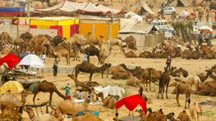 9 Nights / 10 Days
9 Nights / 10 Days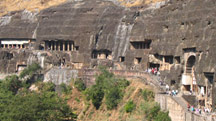 16 Nights / 17 Days
16 Nights / 17 Days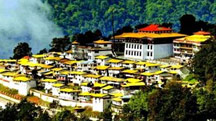 13 Nights / 14 Days
13 Nights / 14 Days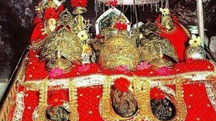 7 Nights / 8 Days
7 Nights / 8 Days





 There are many stories associated with each day of Diwali. Here, we will tell you about these stories and legends of Diwali.
There are many stories associated with each day of Diwali. Here, we will tell you about these stories and legends of Diwali. As per the ancient Indian epic, Ramayana, Lord Rama was sent by his father to exile for 14 years. His wife, Goddess Sita, and brother, Lakshmana accompanied him on this refuge. During the 14 years journey, Sita was kidnapped by Ravana, a demon king, which eventually resulted in war. Lord Ram won the war by killing Ravana reflecting the triumph of good over evil and came back to his Kingdom Ayodhya after 14 years of exile. People of Ayodhya welcomed them by lighting rows of clay lamps. And that’s how Diwali came into existence.
As per the ancient Indian epic, Ramayana, Lord Rama was sent by his father to exile for 14 years. His wife, Goddess Sita, and brother, Lakshmana accompanied him on this refuge. During the 14 years journey, Sita was kidnapped by Ravana, a demon king, which eventually resulted in war. Lord Ram won the war by killing Ravana reflecting the triumph of good over evil and came back to his Kingdom Ayodhya after 14 years of exile. People of Ayodhya welcomed them by lighting rows of clay lamps. And that’s how Diwali came into existence. Once there was a filthy demon called Narakasura, who used to kidnap girls and force them to live with him. People were terrified by his act and decided to plead Lord Vishnu for help. Lord Vishnu came to their rescue in the form of Lord Krishna. He beheaded him (Narakasura) with his Sudarshana Chakra. Before dying, Narakasura requested a boon from his mother, Satyabhama, that everyone should celebrate his death with colorful light. Thus this day is celebrated as ‘Naraka Chaturdashi’ – the day before Diwali. In South India, Diwali is celebrated a week before i.e. on the auspicious occasion of Naraka Chaturdashi.
Once there was a filthy demon called Narakasura, who used to kidnap girls and force them to live with him. People were terrified by his act and decided to plead Lord Vishnu for help. Lord Vishnu came to their rescue in the form of Lord Krishna. He beheaded him (Narakasura) with his Sudarshana Chakra. Before dying, Narakasura requested a boon from his mother, Satyabhama, that everyone should celebrate his death with colorful light. Thus this day is celebrated as ‘Naraka Chaturdashi’ – the day before Diwali. In South India, Diwali is celebrated a week before i.e. on the auspicious occasion of Naraka Chaturdashi. Once upon a time, people of Gokul used to pray Lord Indra to celebrate the Autumn season. Krishna didn’t approve this practice and requested the villagers to give appreciation to Mount Govardhan by preparing a ‘giriyajna’ – a “great offering of foods and delicacies to the mountain.” Upon seeing villagers praying the mountain, Indira fumed and forced and a lightning storm, which leads to continuous downpour in the village for days. That’s when Krishna lifted the Mount Govardhan on his pinky finger, and the entire village came into its shelter. Indra, after causing torrential rains for seven days, ultimately gave up and bowed to Krishna’s superiority. And that’s how the Govardhan Puja came into existence.
Once upon a time, people of Gokul used to pray Lord Indra to celebrate the Autumn season. Krishna didn’t approve this practice and requested the villagers to give appreciation to Mount Govardhan by preparing a ‘giriyajna’ – a “great offering of foods and delicacies to the mountain.” Upon seeing villagers praying the mountain, Indira fumed and forced and a lightning storm, which leads to continuous downpour in the village for days. That’s when Krishna lifted the Mount Govardhan on his pinky finger, and the entire village came into its shelter. Indra, after causing torrential rains for seven days, ultimately gave up and bowed to Krishna’s superiority. And that’s how the Govardhan Puja came into existence. As per Mahabharata, a Sanskrit epic of ancient India, on Kartik Amavashya, Pandavas appeared from their 12 years of banishment, a punishment which they got after a defeat at the game of dice.
As per Mahabharata, a Sanskrit epic of ancient India, on Kartik Amavashya, Pandavas appeared from their 12 years of banishment, a punishment which they got after a defeat at the game of dice. On Diwali, people in East India, mainly Bengal and Assam, worship Kali. There a long story associated with the worship of Kali on the day of Diwali, which says that the goddess lost control and started the dance of destruction after killing so many demons. She started to killing everyone who came here way. That’s when Shiva intervened. He went and lay down among the corpse where the goddess was dancing. Accidentally, Kali stepped on Shiva. Seeing her consort under her foot, Kali realized that she had gone too far, and calmed down. That’s when she took out her tongue out of embarrassment.
On Diwali, people in East India, mainly Bengal and Assam, worship Kali. There a long story associated with the worship of Kali on the day of Diwali, which says that the goddess lost control and started the dance of destruction after killing so many demons. She started to killing everyone who came here way. That’s when Shiva intervened. He went and lay down among the corpse where the goddess was dancing. Accidentally, Kali stepped on Shiva. Seeing her consort under her foot, Kali realized that she had gone too far, and calmed down. That’s when she took out her tongue out of embarrassment. Diwali is religiously significant not only to the Hindus but also to Sikhs, Jains, and Buddhist people.
Diwali is religiously significant not only to the Hindus but also to Sikhs, Jains, and Buddhist people.





 Eat, Decorate, Dress and repeat! If you’ve always thought that the idea of celebrating Diwali for the younger generation is all about clicking pictures with candles and putting on the best clothes then it’s nothing like that. Even the today’s generation take their festival traditional preceding way too seriously. The only difference is that nowadays, people are more creative with the decorations, and they have hands down approach towards it. Lakshmi Puja rituals are still followed. Everything is up for grab in the market as local shopkeepers and store owners, and even the e-commerce media website layout discounts. Special card parties are the most trending things on social media during Diwali.
Eat, Decorate, Dress and repeat! If you’ve always thought that the idea of celebrating Diwali for the younger generation is all about clicking pictures with candles and putting on the best clothes then it’s nothing like that. Even the today’s generation take their festival traditional preceding way too seriously. The only difference is that nowadays, people are more creative with the decorations, and they have hands down approach towards it. Lakshmi Puja rituals are still followed. Everything is up for grab in the market as local shopkeepers and store owners, and even the e-commerce media website layout discounts. Special card parties are the most trending things on social media during Diwali. In the end, we would like to wish you all a very Happy Diwali. If you think, we have missed any custom and tradition then share some information with us.
In the end, we would like to wish you all a very Happy Diwali. If you think, we have missed any custom and tradition then share some information with us.